“The Top Fuel 9.9 flies through singletrack and rips descents, but it really shines when pushed to its full potential during gruelling endurance races.” That’s what Trek say about the Top Fuel 9.9 X01, but how did it fare against its bigger brother, the Fuel EX?
For an overview of the test fleet head to the group test: The best mountainbike of 2021 – 22 models in review
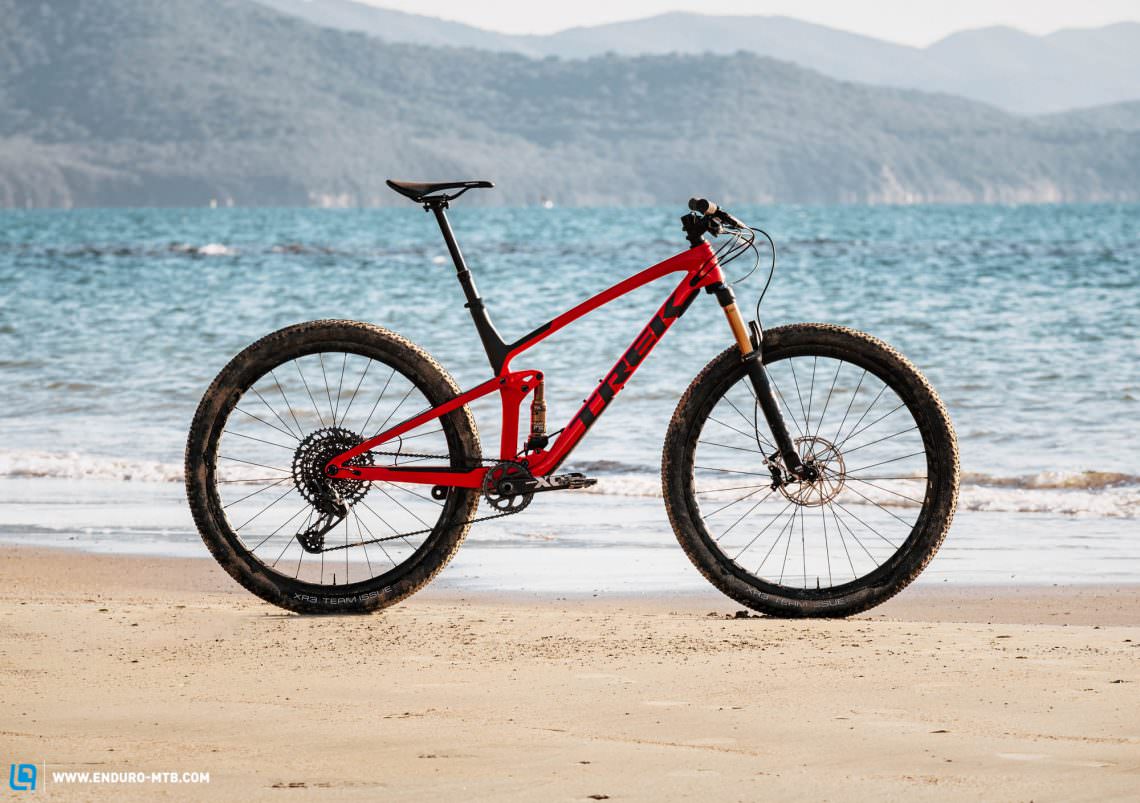
11.54 kg (size L) | € 8,999 | Manufacturer-website
115 mm rear travel, 11.5 kg and a lightweight spec. At first glance, the specs of the Top Fuel 9.9 look impressive, but how much fun will you have onboard the carbon rocket from Wisconsin? Just like its bigger EX sibling, the Top Fuel features Trek’s ABP rear linkage, albeit with 15 mm less travel and a standard FOX DPS Factory shock without Trek’s proprietary Thru Shaft technology. On the handlebars, a dual remote lockout controls a 120 mm FOX 34 fork and, together with the brake levers, shifters and dropper remote, makes for a rather crowded and untidy cockpit. Trek include their proprietary Knock Block in the headset, which limits the steering angle and prevents the fork from damaging the frame and cables from ripping in the event of a crash. On the trail, the system doesn’t affect the handling in any way. A large TPU plate on the downtube protects the frame against stray rocks, while a reasonably sized and well-positioned chainstay protector prevents chain slap and paint chips. Unlike other Trek models, the Top Fuel doesn’t feature a storage compartment integrated into the down tube, forcing riders to carry their trail essentials in a backpack or hip pack instead.
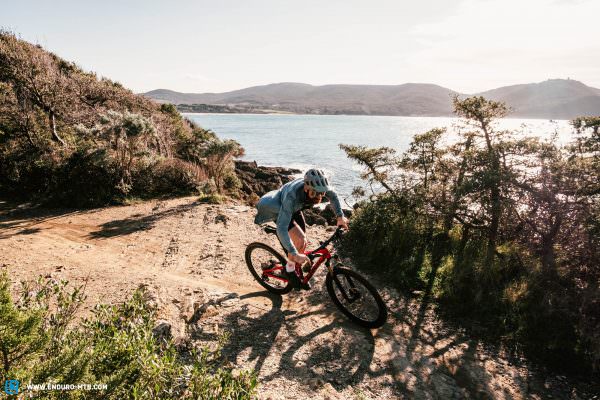

The spec of the Trek Top Fuel 9.9 X01 – Lightweight components for a true high flyer
The € 8,999 Trek Top Fuel 9.9 X01 is specced to ensure a lightweight construction and top efficiency. At 11.5 kg, it’s the lightest bike in our big MTB group test. However, Trek couldn’t achieve this without compromising on trail performance. While the FOX 34 Factory Step-Cast fork, which with its lighter chassis is significantly lighter than a conventional 34, unfortunately, it’s only suitable for particularly light riders. Fast and heavy riders will notice considerable flex in hard corners and compressions, which affects the handling of the bike and dents your confidence. Moreover, hard consecutive hits push the FIT4 damper to its limit. For the tires, Trek spec their own super light Bontrager XR3 Team Issue tires with a puncture-prone casing and shallow tread. While this setup reduces weight and rolling resistance, it generates poor traction in corners and under braking and could potentially result in irreversible damage to the Bontrager Line Elite 30 carbon rims. We recommend upgrading the tires the moment you pick up your bike from the store.
The Trek Top Fuel 9.9 X01 is great fun on fast, sporty laps and very comfortable on long tours, where it convinces with a comfortable pedalling position.
For better downhill performance, you should run a robust but fast-rolling semi-slick tire at the rear, paired with a grippy front tire with a more aggressive profile. Braking is taken care of by SRAM G2 RSC brakes with tool-free lever reach and bite point adjustments. The brakes run on small 180/160 mm rotors and tend to overheat easily, requiring strong fingers on long descents. The drivetrain consists of a high-quality SRAM X01 12-speed rear derailleur with a matching shifter but a cheaper (and heavier) SRAM GX 10–52 t cassette. The rest of the spec is made up of Trek’s in-house components, including the 750 mm Bontrager Line Pro carbon handlebars and 170 mm Line dropper post. The remote is combined with the lockout for the fork and shock – if you’re not careful you’ll activate the wrong lever!

The rear brake rotor is far too small and tends to overheat quickly in combination with the weak SRAM G2 RSC brakes. Alternatively, you could fit a 180 mm rotor at the rear – a bigger one won’t even fit.

There are more remotes and levers than keys on a piano. On the trail, this can quickly lead to mistakes and makes you feel like you’re playing the Fifth Symphony.
Trek Top Fuel 9.9 X01
€ 8,999
Specifications
Fork FOX 34 FIT 4 120 mm
Rear Shock FOX DPS Factory 115 mm
Seatpost Bontrager Line Elite 170 mm
Brakes SRAM G2 RSC 180/160 mm
Drivetrain SRAM XO1 Eagle 1x12
Stem Bontrager Kovee Pro (35) 70 mm
Handlebar Bontrager Line Pro OCVL 750 mm
Wheelset Bontrager Line Elite 30 29"
Tires Bontrager XR3 Team Issue 2.4
Technical Data
Size S M M/L L XL XXL
Weight 11.54 kg
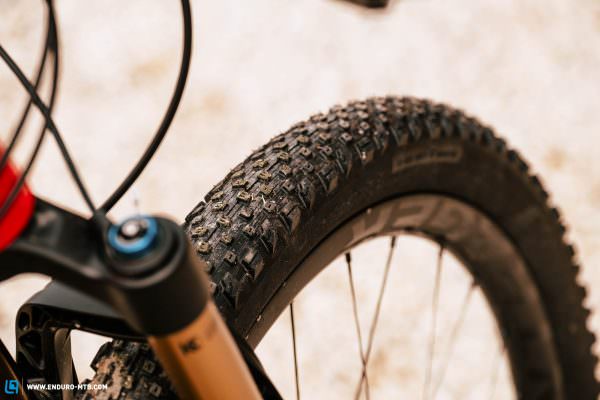
The Bontrager XR3 Team Issue tires lack grip and puncture protection. Ironically, the “Issue” suffix is quite fitting.

Unlike GRAN FONDO editor-in-chief Ben, who rode the bike in this setup, we recommend installing the many factory-supplied spacers under the stem for a more comfortable riding position and more control downhill.
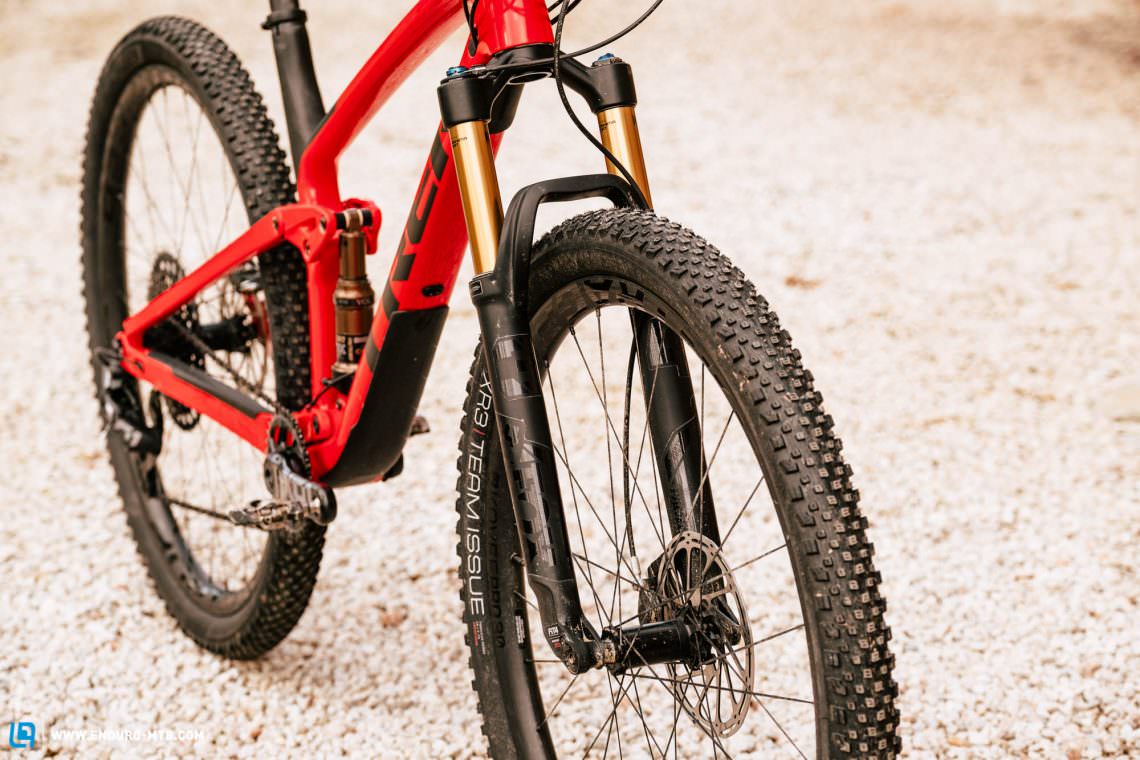
While the lightweight chassis of the standard FOX 34 FIT4 Step-Cast fork helps save weight, the lack of lateral stiffness and inferior FIT4 damper makes for poor trail performance.
The geometry of the Trek Top Fuel 9.9 X01
The Trek Top Fuel is available in six sizes, from S to XXL, which caters to riders between 153 cm to 203 cm tall. Typical for Trek, there’s also an intermediate ML size, which allows many riders to choose between at least two suitable frame sizes. The smallest S size has a modified frame shape with a slight kink in the top tube. A flip-chip in the seat stay allows you to switch between the high and low settings and adapt the geometry of the bike to your needs and preferences. Needless to say, we rode the bike mostly in the low setting, which drops the bottom bracket by 7 mm, slackens the head angle by 0.5 ° and shortens the reach by 5 mm. The size L in the low setting has a reach and seat tube of 470 mm. The reach is in the midfield of our test fleet while the seat tube is on the long side. Despite the low top tube, this restricts the insertion depth of the dropper and thus your freedom of movement, as well as making it hard to upsize if you’re between sizes – what a shame! At 603 mm, the stack height is the lowest in the entire test field. Trek compensate for this by stacking an odd-looking spacer tower under the stem and increasing the handlebar height.
| Size | S | M | M/L | L | XL | XXL |
|---|---|---|---|---|---|---|
| Seat tube | 394 mm | 419 mm | 445 mm | 470 mm | 521 mm | 570 mm |
| Top tube | 564 mm | 599 mm | 615 mm | 632 mm | 651 mm | 677 mm |
| Head tube | 90 mm | 90 mm | 90 mm | 100 mm | 110 mm | 120 mm |
| Head angle | 67.5° | 67.5° | 67.5° | 67.5° | 67.5° | 67.5° |
| Seat angle | 75.0° | 75.0° | 75.0° | 75.0° | 75.0° | 75.0° |
| Chainstays | 435 mm | 435 mm | 435 mm | 435 mm | 435 mm | 435 mm |
| BB Drop | 36 mm | 36 mm | 36 mm | 36 mm | 36 mm | 36 mm |
| Wheelbase | 1,117 mm | 1,152 mm | 1,168 mm | 1,186 mm | 1,207 mm | 1,234mm |
| Reach | 405 mm | 440 mm | 456 mm | 470 mm | 487 mm | 510 mm |
| Stack | 594 mm | 594 mm | 594 mm | 603 mm | 612 mm | 622 mm |
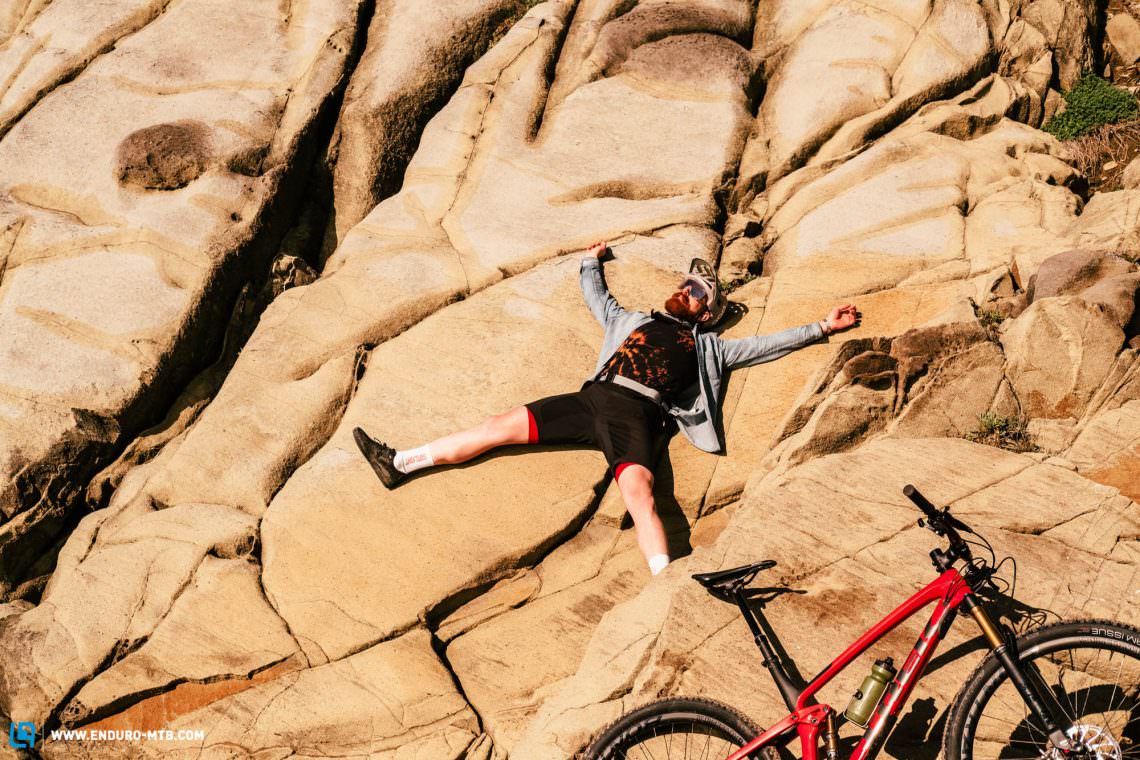
Jacket GRAN FONDO Hemd | Pants GORE Vent
Can the Trek Top Fuel 9.9 X01 with its XC-racing DNA convince on the trail?
Uphill, the Top Fuel lives up to its name. The bike is damn fast and the neutral suspension makes it a great option for long rides too. On flat terrain, it convinces with a comfortable pedalling position, which is suitable for both fast, sporty laps and long rides. The Top Fuel accelerates fiercely and is extremely efficient even with the shock fully open. While you’d expect the active rear end to provide plenty of traction on technical uphills, the low-profile tread of the tire causes the rear wheel to spin out of control. On very steep climbs, the bike forces you to actively lean forward, while the slack seat tube angle positions you far back over the rear wheel, causing the front to lift off the ground. Nevertheless, the Top Fuel overtakes its direct competitor, the Merida NINETY-SIX 8000, without breaking a sweat – in all situations. On fire roads, the climb switch ensures extremely stiff suspension, ensuring excellent acceleration together with the lightweight wheelset. Even strong climbers like the YT Izzo and Yeti SB115 struggle to keep up with the American carbon rocket.
If you’re not too fussed about downhill performance, the Top Fuel is a great option for long rides and lots of fun on easy, flowing singletracks – provided you’re running the right set of tires. Nevertheless, its bigger brother, the Fuel EX, is the better all-rounder.


Tuning-tips: more robust tires with more aggressive tread | 180 mm brake rotor at the rear
Downhill, the Top Fuel loses its advantage over the competition, suffering from a significant lack of braking traction and cornering grip – not least because of its tires. As a result, it’s hard to unlock the full potential of the bike without pushing your own limits. While the tall and stiff cockpit conveys huge amounts of confidence, the stiff suspension passes on vibrations and hits to the rider almost unfiltered, making for vague and undefined handling and causing fatigue and arm pump. The Top Fuel shows its strengths on flowing singletracks with flat sections, where it’s intuitive and easy to ride. On faster and rougher trails with big steps, it quickly reaches its limits, falling behind bikes like the Yeti SB115. On very technical descents it also has to admit defeat to its bigger sibling, the Trek Fuel EX. On top of that, the Fuel EX is only slightly slower uphill but offers more reserves downhill and suits a wider range of applications.

Conclusion
In a direct comparison, the Top Fuel 9.9 X01 has to admit defeat to the Fuel EX. While it has a small advantage uphill, downhill it can’t keep up with the smooth handling and superb suspension performance of its bigger sibling. All in all, the Fuel EX suits a much wider range of application and delivers far more riding fun – even in the significantly cheaper 9.8 GX version we tested. If you’re not too fussed about downhill performance, the Top Fuel is a great option for long rides and still great fun on easy, flowing singletracks – provided you’re running the right set of tires.
Tops
- accelerates willingly
- easy, intuitive handling
Flops
- Bontrager XR3 tires generate poor traction
- remote cluster in the cockpit area is confusing
- odd-looking spacer tower
- no Trek storage compartment
- very few advantages over the Fuel EX, which suits a much wider range of applications
Find more information here: trekbikes.com
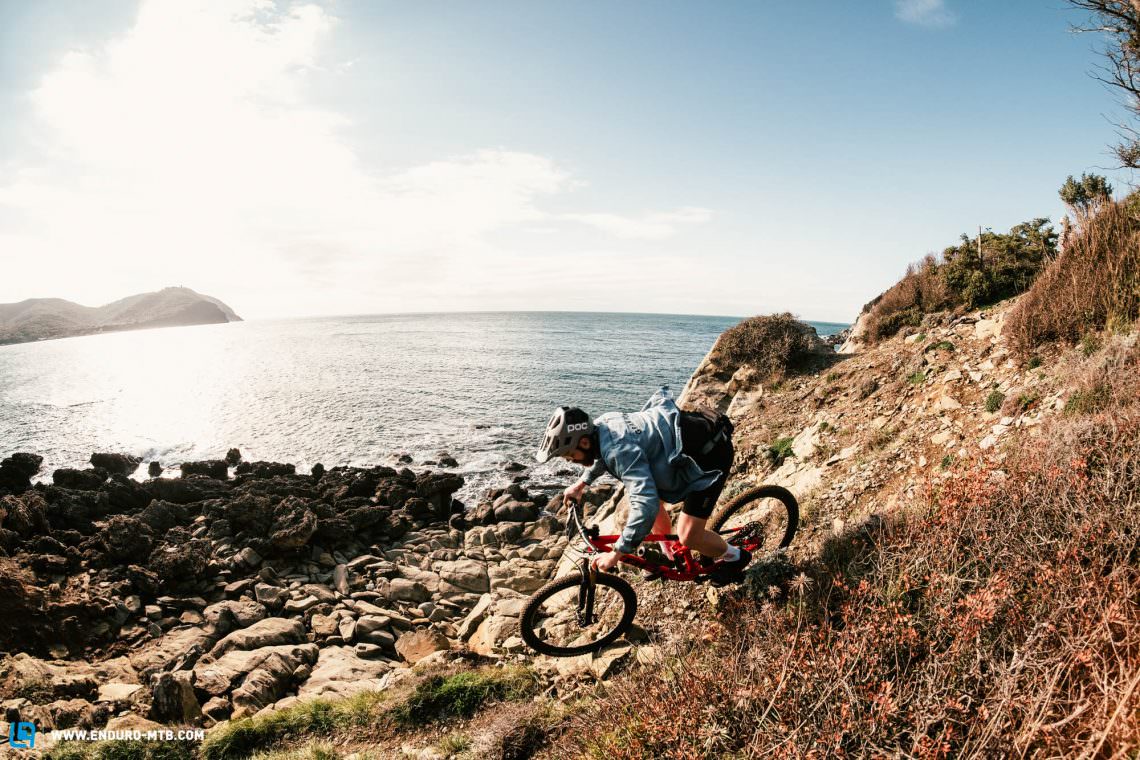
The testfield
Get an overview of the grouptest here: The best mountainbike of 2021 – 22 models in review
All Bikes in this group test: Canyon Neuron CF SLX 9 (Click for review) | Canyon Spectral 29 LTD (Click for review) | Canyon Stoic 4 (Click for review) | FOCUS THRON 6.9 (Click for review) | Ibis Ripmo V2 (Click for review) | MERIDA eONE-SIXTY 10K (Click for review) | MERIDA NINETY-SIX 8000 (Click for review) | Nukeproof Reactor 290C (Click for review) | Orbea Rise M-Team (Click for review) | Propain Hugene (Click for review) | RAAW Jibb XTR Build (Click for review) | Rocky Mountain Instinct C70 (Click for review) | Santa Cruz 5010 X01 (Click for review) | Santa Cruz Tallboy CC X01 (Click for review) | SCOTT Ransom 900 Tuned AXS (Click for review) | Specialized S-Works Stumpjumper (Click for review) | Specialized S-Works Stumpjumper EVO (Click for review) | Specialized S-Works Turbo Levo SL (Click for review) | Trek Fuel EX 9.8 GX (Click for review) | Trek Top Fuel 9.9 X01 | Yeti SB115 TURQ3 (Click for review) | YT IZZO BLAZE 29 (Click for review)

Did you enjoy this article? If so, we would be stoked if you decide to support us with a monthly contribution. By becoming a supporter of ENDURO, you will help secure a sustainable future for high-quality mountain bike journalism. Click here to learn more.
Words: Peter Walker Photos: various









